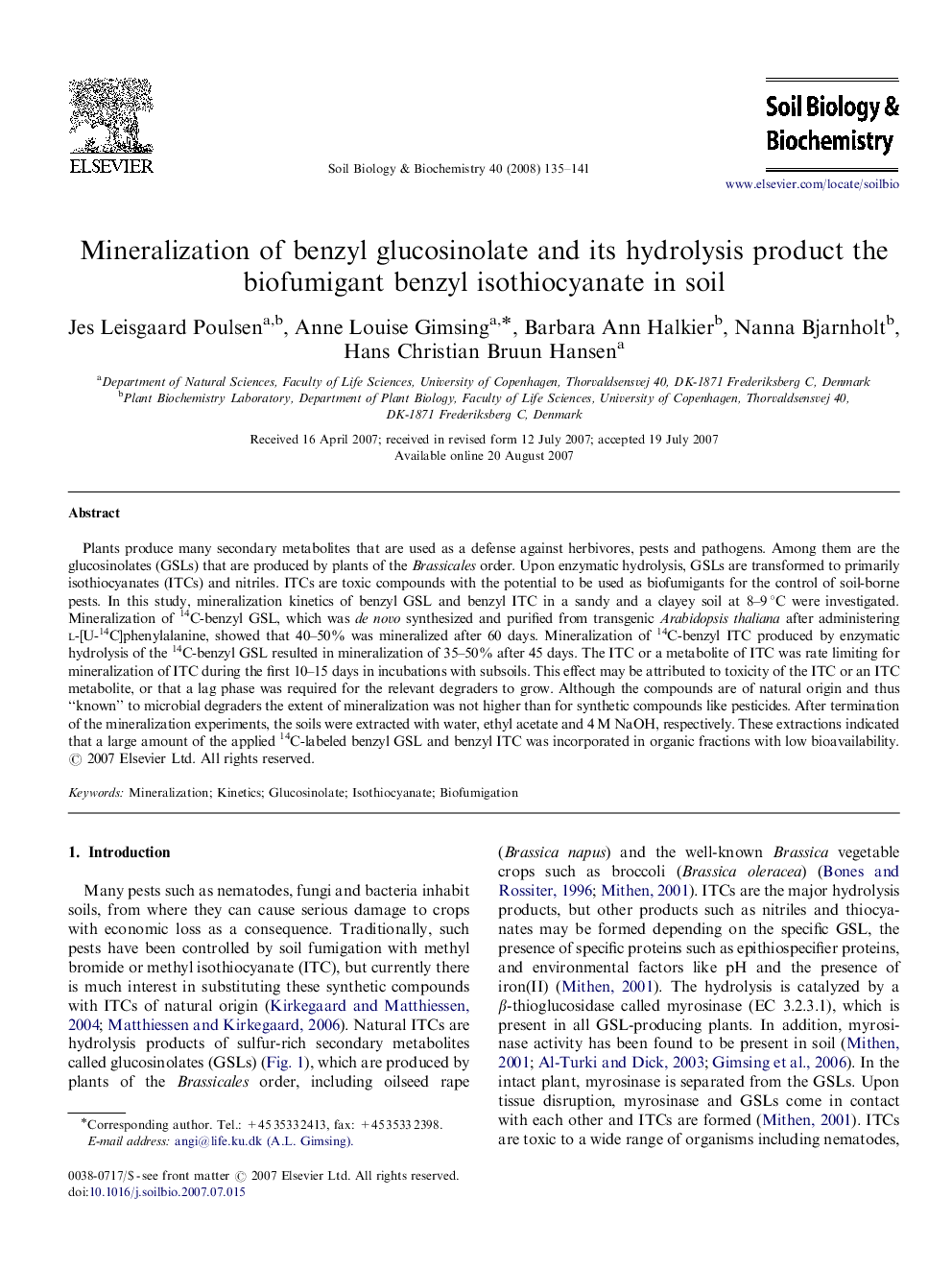| Article ID | Journal | Published Year | Pages | File Type |
|---|---|---|---|---|
| 2025485 | Soil Biology and Biochemistry | 2008 | 7 Pages |
Plants produce many secondary metabolites that are used as a defense against herbivores, pests and pathogens. Among them are the glucosinolates (GSLs) that are produced by plants of the Brassicales order. Upon enzymatic hydrolysis, GSLs are transformed to primarily isothiocyanates (ITCs) and nitriles. ITCs are toxic compounds with the potential to be used as biofumigants for the control of soil-borne pests. In this study, mineralization kinetics of benzyl GSL and benzyl ITC in a sandy and a clayey soil at 8–9 °C were investigated. Mineralization of 14C-benzyl GSL, which was de novo synthesized and purified from transgenic Arabidopsis thaliana after administering l-[U-14C]phenylalanine, showed that 40–50% was mineralized after 60 days. Mineralization of 14C-benzyl ITC produced by enzymatic hydrolysis of the 14C-benzyl GSL resulted in mineralization of 35–50% after 45 days. The ITC or a metabolite of ITC was rate limiting for mineralization of ITC during the first 10–15 days in incubations with subsoils. This effect may be attributed to toxicity of the ITC or an ITC metabolite, or that a lag phase was required for the relevant degraders to grow. Although the compounds are of natural origin and thus “known” to microbial degraders the extent of mineralization was not higher than for synthetic compounds like pesticides. After termination of the mineralization experiments, the soils were extracted with water, ethyl acetate and 4 M NaOH, respectively. These extractions indicated that a large amount of the applied 14C-labeled benzyl GSL and benzyl ITC was incorporated in organic fractions with low bioavailability.
